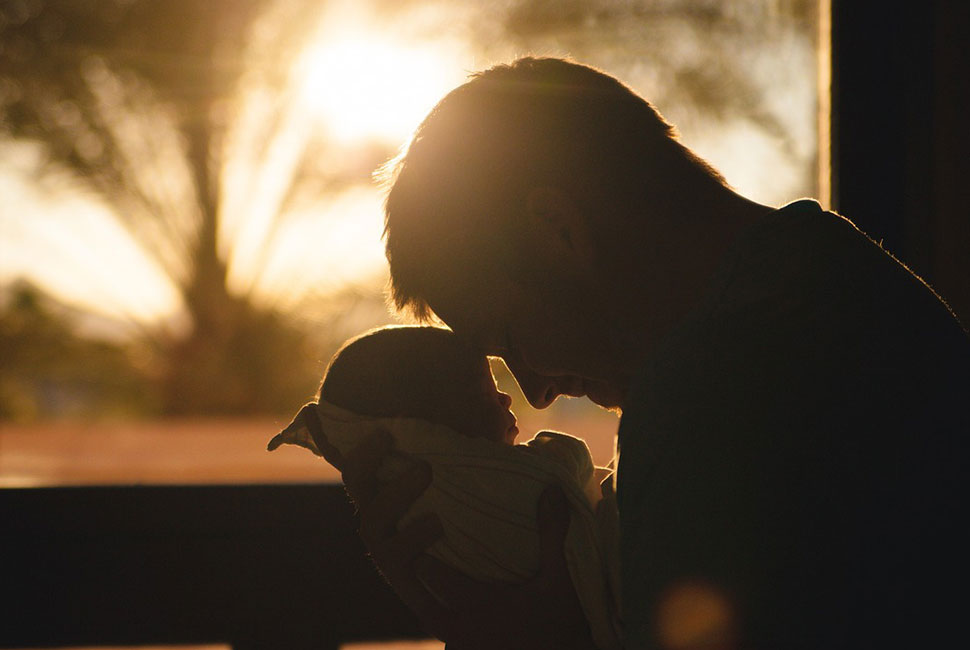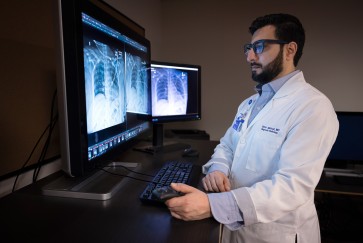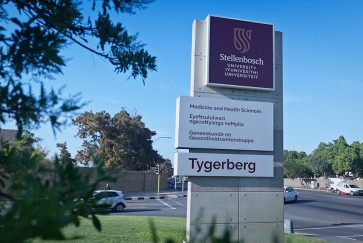Four children who acquired HIV in utero have remained free of detectable HIV for more than one year, according to new findings that were presented today, March 6, at the Conference on Retroviruses and Opportunistic Infections (CROI) in Denver.
The study is part of ongoing, multinational research led in part by scientists from Northwestern University Feinberg School of Medicine and Stanley Manne Children’s Research Institute at Ann & Robert H. Lurie Children’s Hospital of Chicago.
When a child acquires HIV while in the uterus, during birth or through breastmilk, they must take lifelong antiretroviral therapy (ART) to control the virus’ ability to replicate, thereby preventing life-threatening complications. ART medications — taken in liquid form for children — are a huge burden on families as they have a rancid flavor (often called “the nasty medicine”), need to be taken on a frequent, rigid schedule to keep the virus at bay, are costly and can have many unpleasant side effects.
“Moving away from reliance on daily ART to control HIV would be a huge improvement to the quality of life of these children,” said study protocol chair Dr. Ellen Chadwick, professor of pediatric infectious diseases at Feinberg and former director of the section of pediatric, adolescent and maternal HIV infection at Lurie Children’s.
Relying less on “nasty medicine” to control HIV is a “huge improvement” for families’ quality of life.
Children in the study began receiving ART within the first 48 hours of life and were closely monitored for drug safety and HIV viral suppression. By age five, those who were deemed eligible to have their ART paused while being closely monitored for health and safety, had their ART stopped to see if they could achieve HIV remission (the absence of detectable virus for at least 48 weeks off ART).
This is the first study of its kind in the U.S. and globally, Chadwick said.
Breaking down the findings
Of the 54 children originally enrolled in the study — most of whom were international — six children were deemed eligible for ART interruption. Among those six, HIV stayed completely undetected for 48 weeks and longer in four children; of those, three children are still being followed in remission for 48, 52 and 64 weeks, respectively. The fourth child had experienced remission for 80 weeks before their HIV rebounded to detectable levels.
“This remission was much longer than we had anticipated,” Chadwick said. “We’re not surprised or crestfallen if they rebound because that’s what usually happens when medications are stopped. If we can get the virus to such low levels that we might be able to use some newer, innovative treatments to keep them from needing medication every day, then we’re setting them up for success with long-term virologic control.”
In the two children who did not experience remission, their HIV became detectable within three and eight weeks after ART interruption, respectively. The two children whose HIV returned at 8 and 80 weeks experienced mild acute retroviral syndrome (ARS) with symptoms including headache, fever, rash, swollen lymph nodes, tonsillitis, diarrhea, nausea and vomiting. One child had markedly low white blood cells (a type of immune cell) for a very brief period. Both the ARS and white blood deficiency resolved either prior to or soon after restarting ART. The three children who experienced viral rebound resumed HIV suppression to undetected levels within 6, 8 and 20 weeks of restarting ART.
Previous research and next steps
Previous research found very early ART initiation may limit HIV’s ability to establish reservoirs of dormant virus in infants. In the U.S., babies who are born to people at high risk of transmitting HIV typically receive three drugs in the ART protocol in the first hours of life.
“Very early treatment also relies on testing at birth, which is not universally done,” said Dr. Jennifer Jao, protocol co-chair and professor of pediatric infectious diseases at Feinberg and a Lurie Children’s physician. “The idea that we’re doing this in neonates is very novel. It's taking this idea of getting ART into the babies so early that we can try to smack down the virus so it goes down to such low levels and achieve an almost-zero reservoir.”
The findings build off an earlier phase of the study by Chadwick and Jao, published December 2023 in The Lancet HIV, which found children who began ART within 48 hours after birth exhibited biomarkers by 2 years old that made them potentially eligible to test for medication-free remission.
While the scientists don’t know the reason for the remission, they have hypotheses.
“We don't know precisely why they did so well, but we think it's because we reduced the reservoir to such a low level that the virus didn’t re-emerge in the same way it would in someone with a larger, more established reservoir,” Chadwick said.
Next steps for this research include ART interruption even earlier (at 2 years old), using better-tolerated and more active drugs and adding an arm of research that incorporates broadly neutralizing antibodies, which will serve as an additional fight against the virus.
This ongoing research is being conducted by International Maternal Pediatric Adolescent AIDS Clinical Trials (IMPAACT), a research network funded by the National Institute of Allergy and Infectious Diseases (NIAID), part of the National Institutes of Health, with co-funding from the Eunice Kennedy Shriver National Institute of Child Health and Human Development (NICHD), and the National Institute of Mental Health (NIMH).
This study, called IMPAACT P1115, was funded by the IMPAACT Network, as a Phase 1-2 proof-of-concept study of very early ART in infants conducted in Brazil, Haiti, Kenya, Malawi, South Africa, Tanzania, Thailand, Uganda, the United States, Zambia and Zimbabwe.
Overall support for IMPAACT was provided by NIAID with co-funding NICHD and NIMH, all components of the National Institutes of Health (NIH), under award numbers UM1AI068632-15 (IMPAACT LOC), UM1AI068616-15 (IMPAACT SDMC) and UM1AI106716-09 (IMPAACT LC), and by NICHD contract number HHSN275201800001I. The content is solely the responsibility of the authors and does not necessarily represent the official views of the NIH.


